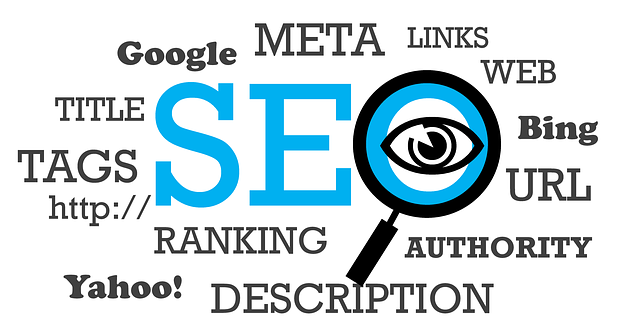Understanding and implementing SEO tips for ranking higher is paramount for e-commerce success, driving visibility, traffic, and conversions. Key strategies include keyword research using tools like Google Keyword Planner to target specific search terms, particularly long-tail keywords. Optimizing product pages with unique titles, meta descriptions, schema markup, and clean URLs boosts search engine rankings. Creating high-quality content that provides valuable insights and solutions enhances user experience and keeps visitors engaged. Integrating user-generated content (UGC), such as reviews, increases brand credibility and fosters community. Building high-quality backlinks from reputable sources signals trust to search engines. Technical SEO considerations, like structured data markup, XML sitemaps, mobile responsiveness, and HTTPS, are essential for effective site crawling and indexing. Finally, continuous monitoring and analysis using tools like Google Analytics and Search Console allow for data-driven adjustments to maintain competitive edge.
In the competitive e-commerce landscape, understanding and implementing effective SEO strategies is crucial for achieving higher rankings and driving organic traffic. This article offers a comprehensive guide to elevate your online store’s visibility. From grasping fundamental SEO concepts to leveraging user-generated content and optimizing product pages, we’ll uncover essential tips. Discover the power of high-quality content and technical SEO considerations that ensure mobile-friendliness. By implementing these strategies, you can significantly improve your search engine rankings and captivate a wider audience.
Understanding SEO Basics for E-commerce

Understanding SEO basics is paramount for e-commerce success. Search Engine Optimization (SEO) is the practice of enhancing website visibility and traffic by aligning content with user search queries and search engine algorithms. For e-commerce, this means optimizing not just your product pages but also category pages, filters, and even your site’s overall architecture. Effective SEO tips for ranking higher include conducting thorough keyword research to understand what products and terms customers are searching for, ensuring fast loading times, implementing structured data markup for rich snippets, and creating high-quality, unique product descriptions that accurately reflect what customers will find.
Additionally, building a solid internal linking structure helps search engines understand the hierarchy of your site, while external backlinks from reputable sources signal to search engines that your content is valuable and trustworthy. Regularly updating your product content with fresh, relevant information, as well as leveraging user-generated content like reviews, can also significantly boost your SEO performance. Remember, SEO is an ongoing process that requires continuous monitoring, analysis, and adjustments to stay ahead of the curve in a competitive e-commerce landscape.
Keyword Research: Finding Relevant Terms

Keyword research is a crucial step in any successful SEO strategy, especially for e-commerce websites aiming to rank higher. The process involves identifying the terms and phrases that potential customers use when searching for products or services similar to yours. Tools like Google Keyword Planner, SEMrush, and Ahrefs can help uncover valuable insights by analyzing search volume, competition, and user intent.
Focusing on long-tail keywords—more specific, unique phrases with lower search volume—can give your e-commerce site a competitive edge. These terms often have less competition and better conversion rates as they match the precise needs of the users searching for them. By incorporating these relevant terms into your product titles, descriptions, meta tags, and content, you can enhance your website’s visibility to the right audience, driving more targeted traffic and improving your chances of ranking higher in search engine results.
Optimizing Product Pages for Search Engines

Optimizing product pages is a crucial aspect of improving your e-commerce website’s visibility in search engine results. When it comes to SEO tips for ranking higher, focusing on product page optimization should be at the top of your to-do list. Start by ensuring each product has a unique and descriptive title that includes relevant keywords. This helps search engines understand the content of your pages better. Additionally, optimize meta descriptions to provide a compelling summary of the product while incorporating target keywords naturally.
Regularly updating product content with fresh, high-quality images and detailed descriptions is another essential SEO strategy. Search engines favor websites that offer valuable, informative content. Utilizing schema markup for products can also enhance search engine comprehension, making it easier for them to index your pages accurately. Finally, optimize URL structures to be clean, readable, and keyword-rich, further assisting both users and search algorithms in navigating your e-commerce site efficiently.
The Power of High-Quality Content

High-quality content is an absolute game changer when it comes to boosting your e-commerce website’s search engine optimization (SEO). It’s one of the most powerful SEO tips for ranking higher and driving organic traffic. When crafting content, focus on providing in-depth product descriptions, sharing unique insights, and offering solutions to customer problems.
Engaging and informative content not only satisfies users but also encourages them to spend more time on your site, reducing bounce rates. Search engines like Google prioritize websites that offer a great user experience, and this is where high-quality content shines. Regularly updating your e-commerce platform with fresh, relevant content signals to search algorithms that your site is active, authoritative, and worth ranking higher.
Leveraging User-Generated Content (UGC)

In the competitive world of e-commerce, leveraging user-generated content (UGC) is a powerful SEO tip that can significantly enhance your website’s visibility and ranking. UGC, such as customer reviews, ratings, and social media mentions, adds credibility to your brand and products, encouraging potential customers to trust your offerings. By integrating these authentic insights into your site’s content strategy—including product descriptions and blog posts—you create a more engaging user experience that search engines recognize and reward.
User-generated content not only boosts SEO but also fosters a sense of community around your brand. Encouraging customers to share their experiences and thoughts on social media platforms increases organic reach, drives traffic back to your site, and provides valuable data that can inform future marketing and product development strategies. With the right tools and approach, UGC can be a game-changer in your SEO arsenal, helping you climb the rankings and attract more qualified visitors to your e-commerce platform.
Building Quality Backlinks for E-commerce Sites

Building quality backlinks is a vital SEO tip for e-commerce sites aiming to rank higher. These links act as votes of confidence from other websites, signaling to search engines that your online store offers valuable content and trustworthy information. Focus on acquiring backlinks from reputable and relevant sources within your industry. This could include high-authority blogs, influential brand partnerships, or industry-specific directories.
Engage in strategies like guest blogging, where you contribute valuable content to popular blogs in exchange for links back to your e-commerce site. Additionally, ensure that your website provides compelling resources, such as informative guides or unique product reviews, which naturally attract backlinks from other sites looking to reference your expertise.
Technical SEO Considerations for Better Rankings

When it comes to e-commerce, Technical SEO Considerations are often overlooked but they’re crucial for SEO tips for ranking higher. A well-optimized site structure ensures that search engines can easily crawl and index your products. This includes implementing structured data markup to provide additional context about your items, ensuring XML sitemaps are up-to-date for better visibility, and optimizing URL structures to be descriptive and user-friendly. Fast loading times are also essential; compressing images, leveraging browser caching, and using a content delivery network (CDN) can significantly improve site speed.
Mobile responsiveness is another key aspect that cannot be ignored. With the majority of online shopping happening on mobile devices, ensuring your e-commerce platform is fully optimized for smartphones and tablets is vital. Google’s mobile-first indexing means mobile usability will directly impact rankings. Additionally, secure your site with HTTPS to boost trust and search engine rankings, as it encrypts data transmission between the website and its users.
Mobile Optimization: A Must for E-commerce SEO

In today’s digital era, mobile optimization is no longer an option but a necessity for e-commerce websites aiming to rank higher with effective SEO tips. With a vast majority of internet users accessing online stores through smartphones and tablets, ensuring your site is fully responsive and optimized for various screen sizes is crucial. Google, for instance, has made it clear that mobile-friendliness is a significant ranking factor, meaning sites that offer seamless experiences on mobile devices are likely to appear higher in search results.
To achieve this, e-commerce businesses should focus on optimizing site speed, ensuring touch-friendly navigation, and streamlining checkout processes for mobile users. Using lightweight images, enabling lazy loading, and implementing accelerated mobile pages (AMP) can significantly enhance page load times, improving user experience and search engine rankings. Remember that a well-optimized mobile site not only boosts your SEO efforts but also increases customer satisfaction and conversion rates.
Measuring and Analyzing SEO Performance

Measuring and analyzing SEO performance is a crucial step in understanding what’s working, what isn’t, and where to focus your efforts for improvement. Utilize tools like Google Analytics and Search Console to track key metrics such as organic traffic, click-through rates (CTRs), average position, and conversion rates. These insights will help you identify top-performing pages and content, as well as areas that need optimization.
By regularly reviewing these data points, you can implement effective SEO tips for ranking higher. Optimize product descriptions and titles with relevant keywords; improve site speed to enhance user experience; ensure mobile responsiveness since most users access sites via smartphones; and build high-quality backlinks from reputable sources. These strategies will not only boost your search engine rankings but also drive more qualified traffic to your e-commerce website, ultimately leading to increased sales and revenue.
